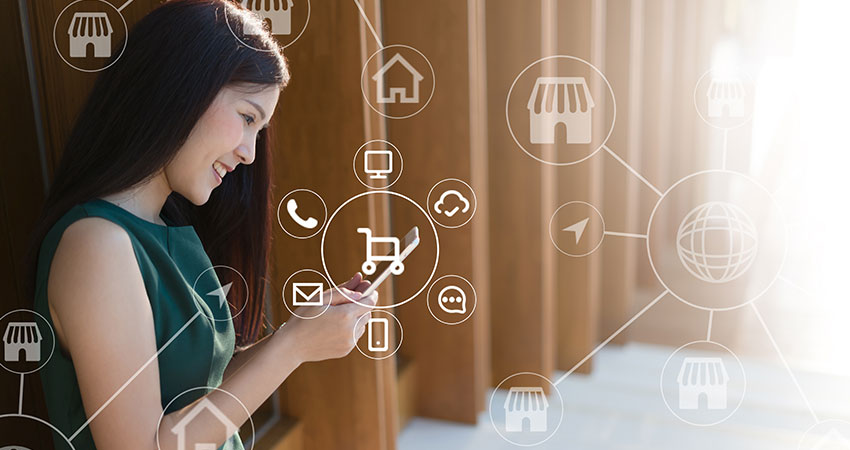While retailers have become adept at using ecommerce metrics and web analytics to glean data insights, many struggle to see into offline channels to reduce costs, streamline supply chains, better tailor offerings and improve the customer value proposition. Taking a 360-degree view of data analytics is key to tying together offline/online channels, especially for luxury retailers where customer expectations for personalization and execution are high.
Taking full advantage of big data insights will enable retailers to make quick, informed decisions vs. relying on traditional analytics. They can better understand their customers, track their behaviors, and understand purchase patterns and frequency, in order to market the right products in the right places at the right time.
Since 2020, many retailers pivoted to digital to survive, with the future shrouded in thick fog. Winners have found the answer to adapting and surviving lies in increasing the number of variables you can control. Effective data analysis allows you to predict the future with greater accuracy, and make strategic decisions with more confidence.
Benefits of Big Data in Retail
Unprecedented Customer Insights
Consumers are becoming increasingly reliant on technology to control the purchase process and make shopping as convenient as possible. Digital tools give them more control and paves the way for acquiring first-party data to facilitate better outreach in a future without 3P cookies. Retailers simply cannot afford to miss out on this data-gathering opportunity.
Inventory Control and Personalization
When your ecommerce storefront links with real-time inventory data, shoppers are informed immediately about product availability. This eliminates downstream problems and inefficiencies with substitute products or stock-outs. Real-time location data also enables curbside pickup. From online click streams, you can track individual customers’ behavior, update their preferences and predict future behavior in real time.
Data helps you determine when customers are about to make a purchase decision and when they can potentially push the transaction forward by combining preferred products offered with reward program savings. By leveraging information from your loyalty program, real-time targeting can also increase margins on higher-priced goods by preferred customers.
Shorter Sales Cycles, Better Marketing
Traditionally, retail has been the right place for data-driven customization because of the quality, variety and volume of data available from social networks, online purchases and smartphone connections. Data-driven decision-making and customizations have helped modern retailers gain large-scale advantages. Advanced analytics can shorten the time it takes to drive sales from a few months to just a week, and make campaigns more effective with better targeting.
Challenges Looking Ahead
Too Many Options
With so many tools available, you need to consider the various capabilities before jumping into the deep end. The plethora of solutions can distract from your core strategy and rob you of valuable time and investment. It can also be a challenge to integrate multiple tools and vendors.
Assess your current solutions and capabilities, comparing them with a “best-in-class” solution. Then, determine what will be needed in the next few years to ensure the solution can grow with your needs and customer expectations. Your playbook may differ substantially from other players and change over time, making a modular, microservices-based platform an ideal solution.
Incomplete Data
Files are either incomplete or filled with garbage because of poor data discipline, or they simply don’t collect the necessary data to be successful. Ecommerce and store shopping are not mutually exclusive. Consumers can both do their research online and visit a store to inspect it in person. Thus, the rise of the anytime/anywhere/any way omnichannel shopper.
Pay special attention to consumer shopping behaviors, purchasing decisions and trends. Getting a complete picture of buying preferences and habits requires combining all data across channels. It has never been more crucial for inventory management and store performance goals to be able to see, work with and take advantage of the data.
Brick-and-Mortar
The success and prosperity of stores also depend on data. Rather than just stocking shelves and racks, retailers must transform physical locations into customer engagement centers. Shoppers want to know they can turn to someone for quick and efficient responses when they have a question. When ordering something for delivery or store pickup, they want to know that they’ll get it as quickly as possible. More and more retailers are satisfying that demand efficiently by using stores as supply chain nodes.
To reach each of these goals, data is essential. Store employees can make smarter decisions right at the shelf, with customers or in the stock room with access to powerful, easy-to-understand analytics. Data is also essential for deciding where to open new retail locations in order to serve walk-in and online customers. Space analysis helps you make informed decisions, including customer behavior analysis and drive-time calculations.
Conclusion
With the rise of direct-to-consumer, stores are becoming engagement centers and supply chain hubs, as retailers adapt to consumer tastes and buying habits. Data analytics is the clear path to making these changes and meeting shopper expectations, driving strategy in a highly competitive, crowded market. It can provide you with the right answers, and help you develop a future-proof roadmap for success not based on assumptions or guesswork.
Susan Jeffers is CEO and founder of XY Retail

